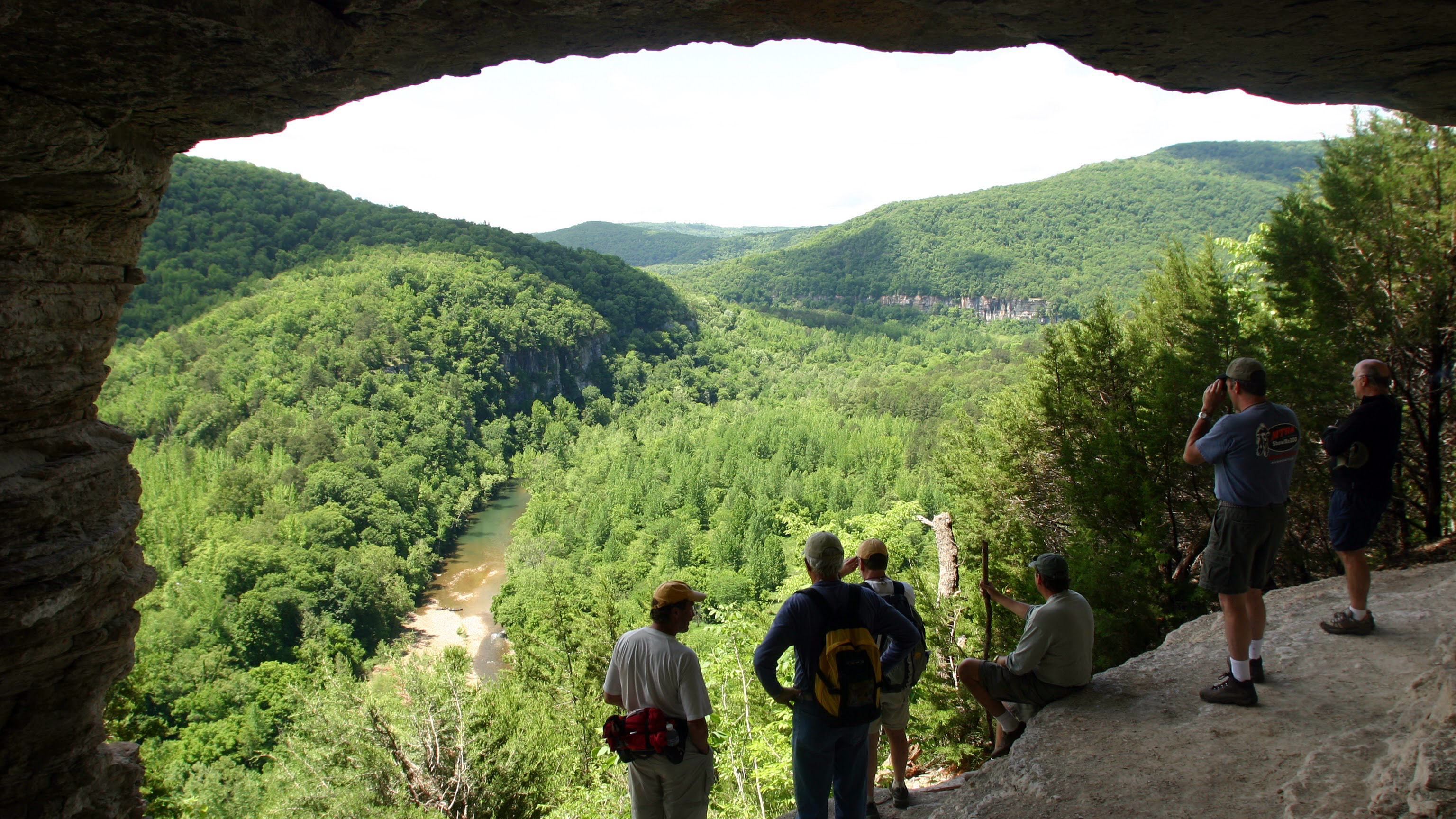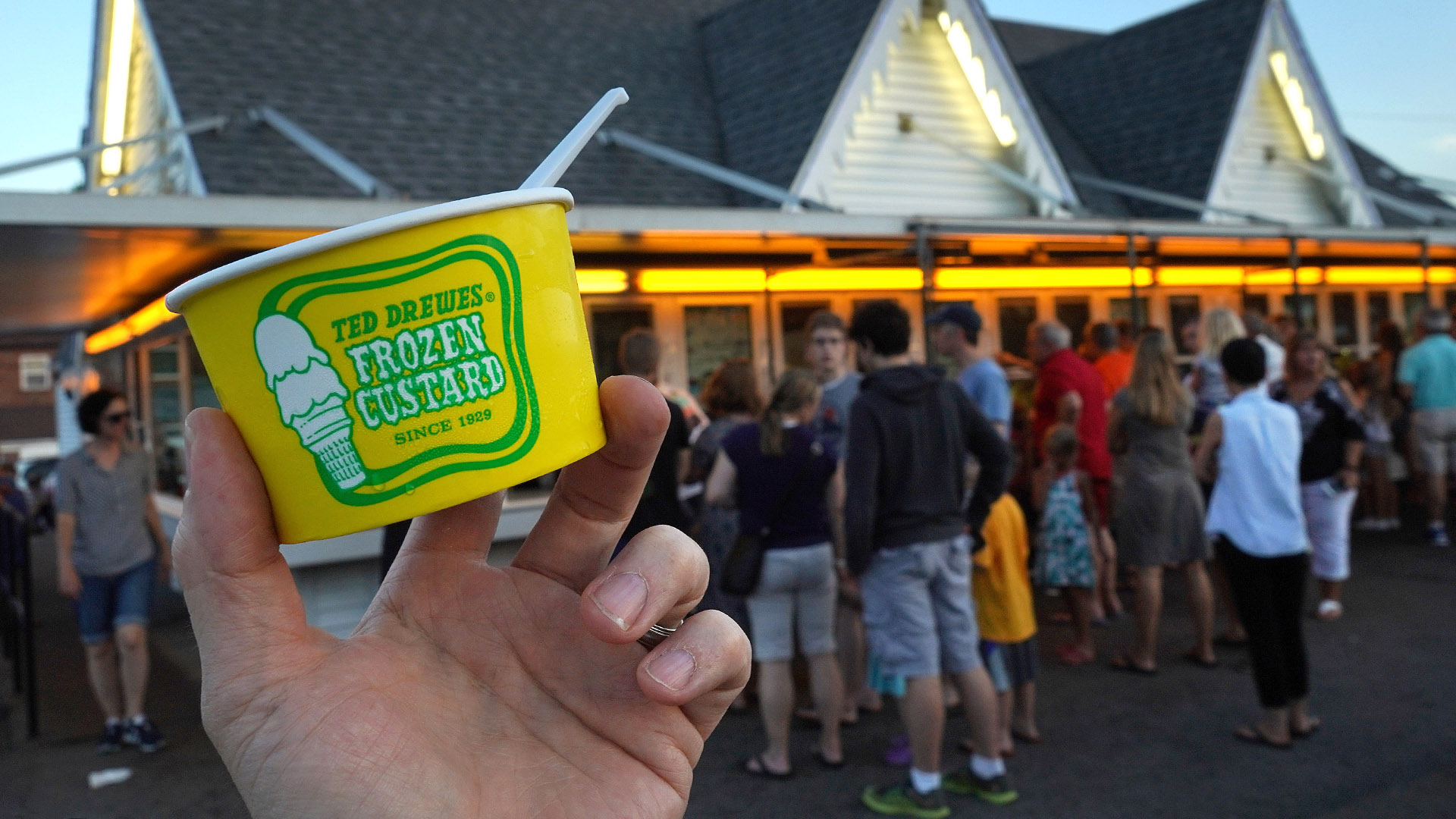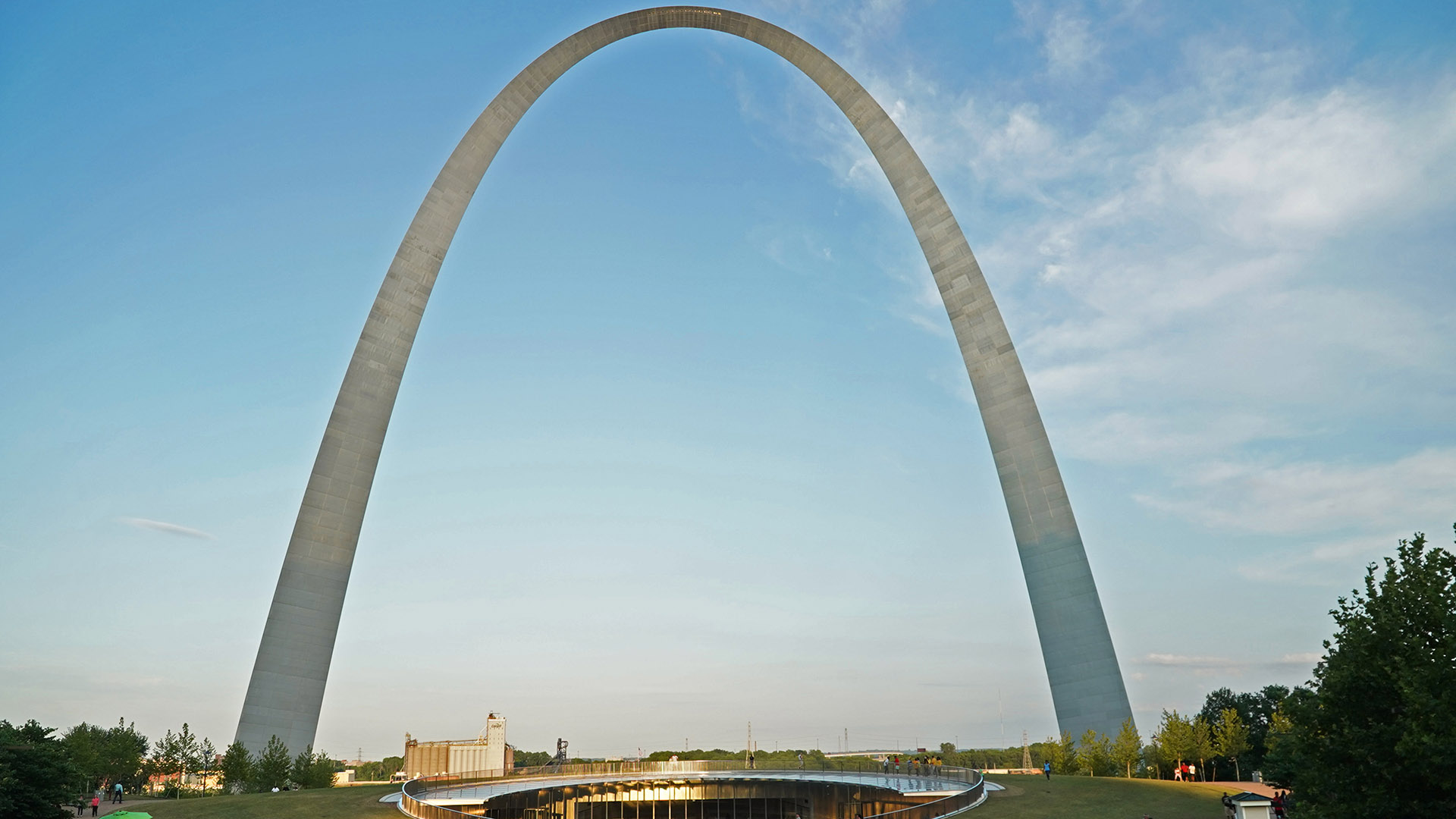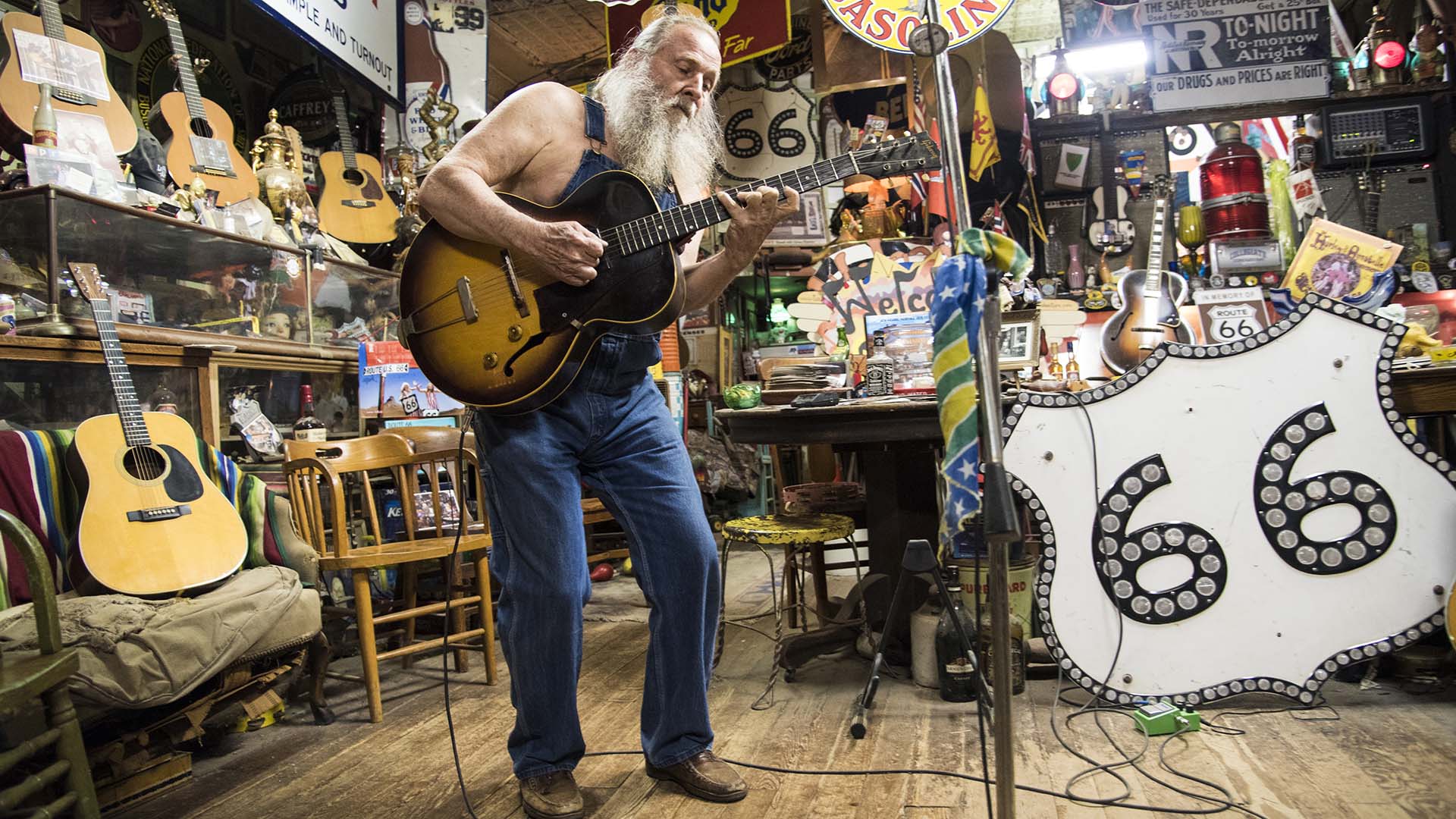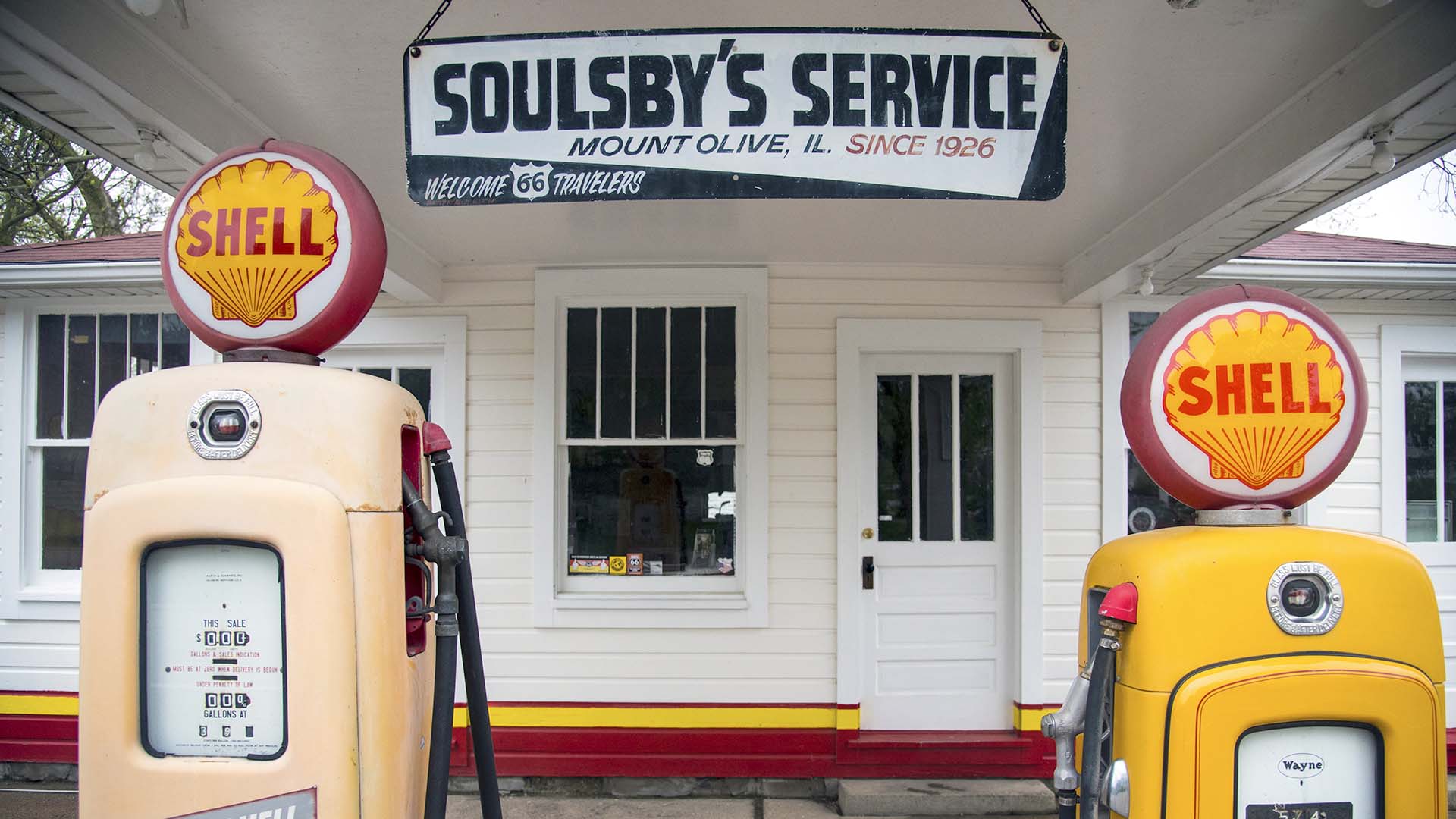A Trip to the Arch and Beyond

Architect Eero Saarinen created the Arch after winning a national competition to design the monument for St. Louis in 1947.
Story by Jody Mitori; photos by Lynden Steele
Jody is an editor and writer who lives in Columbia, Missouri. Lynden is director of photojournalism at the Reynolds Journalism Institute.
A St. Louis native shares her list of must-see spots in her hometown.
I have always loved to show off the city where I live. When my husband and I lived in the Bay Area and Washington, D.C., we had no shortage of guests. Ten years ago, however, when we moved to my hometown of St. Louis, our number of visitors decreased considerably. Now, I have to do a little more convincing to draw people to the Midwest.
What many people may not realize is that the St. Louis area is full of cultural gems, many of which you can visit for free. It has a thriving arts scene, family-friendly attractions and signature foods that are sure to please.
Here are 10 must-see stops for tourists, proof that “flyover country” has much to offer and is often more affordable than many other major cities.
The Gateway Arch
When people think of St. Louis, usually one image comes to mind: the Gateway Arch. Completed in 1965, the towering stainless steel monument designed by architect Eero Saarinen has provided the city with an unmistakable skyline. In 2018, its new curved glass entrance and free museum opened, giving the Arch a much-needed update. Set aside an hour to go through the museum’s six interactive galleries that take visitors through more than 200 years of U.S. history. The final gallery focuses on the building of the Arch, including some of the proposed ideas for the design competition for the monument.
While the museum is free, the trip to the top of the Arch and the accompanying documentary about its construction are not. No matter, the ride on the specially designed tram that ascends 630 feet up one of the legs of the building is worth the $13 admission price. The snug tram pods seat five people and have a space-age look that compliments the structure’s modernist design. At the top of the Arch, you can see sweeping views of downtown St. Louis, the Mississippi River and Illinois. After you descend, be sure to watch the Oscar-nominated film “Monument to the Dream,” a fascinating look at the engineers and workers who constructed the Arch.
The outdoor landscaping around the Arch has also been improved with grassy fields that are perfect for picnics at sunset. The fields stretch over a highway and connect downtown to the grounds, so pedestrians and cyclists can get to the Arch without having to dodge traffic.

The entrance to the Museum of Westward Expansion at the Gateway Arch

Grizzly Ridge is one of Saint Louis Zoo's newest habitats. Two orphaned grizzly bears, Huck and Finley, call the habitat home.
National Blues Museum
About a half-mile from the Arch is the National Blues Museum, which opened in 2016 and traces the history of blues from the work songs of plantation life to the music of key figures W.C. Handy, Ma Rainey and Robert Johnson. The contributions from musicians in Memphis, New Orleans and Chicago are highlighted alongside St. Louis’ native musicians. Interactive stations explain the structure of a blues song and the guitar and harmonica styles of different blues players. I even tried playing the washboard in a jug band in one interactive room. (It’s harder than it looks.) Several evenings during the week, you can hear live blues music in the Lumiere Place Legends Room. Conveniently, next door to the Blues Museum is one of the locations of Sugarfire Smoke House, one of the city’s best barbecue spots.
Cahokia Mounds
To learn about the earliest history of the area, drive across the Poplar Street Bridge to Collinsville, Illinois. Cahokia Mounds State Historic Site is the largest prehistoric Indian site north of Mexico and still has about 80 of the agricultural society’s 120 mounds. I recommend stopping first at the interpretive center to learn about the people who resided at the site from about A.D. 800-1200. Then, walk outside to see the mounds, which were often used as the base for ceremonial buildings. You can climb the tallest, 100-foot Monks Mound, or walk around the wooden sun calendar, Woodhenge.
St. Louis Zoo
To the west of downtown St. Louis, you’ll find one of the city’s biggest treasures, Forest Park. Nearly 500 acres larger than New York’s Central Park, Forest Park was the site of the 1904 World’s Fair. Today, several of the city’s major cultural attractions can be found in the park. Most offer free admission, including the St. Louis Zoo. At the zoo, you can see a 1,100-pound polar bear named Kali dive into the water or gnaw on a fish at Polar Bear Point or watch the impressive animals at the sprawling new Grizzly Ridge. The bears may be some of the most popular attractions, but the zoo has so many animals to see that it’s worth taking a ride on the Zooline Railroad to get a tour around the campus. Zoo regulars have their favorite animals. My kids love the red pandas, elephants and sloths, while I like to stop by the River’s Edge to see a capybara, the world’s largest rodent.
St. Louis Art Museum
Just up the hill from the zoo is the St. Louis Art Museum and its vast collections. As a kid, I always loved exploring the Beaux Arts-style building, designed by architect Cass Gilbert for the World’s Fair, because it was like a palace full of beautiful works, cavernous spaces and winding hallways. As an adult, I favor the museum’s East Building that debuted in 2013. With its sleek, modern design and floor-to-ceiling windows, the East Building is primarily dedicated to modern and contemporary art, including works by Gerhard Richter, Roy Lichtenstein, Helen Frankenthaler and Richard Serra. The art museum has several special events throughout the year, including Art in Bloom, a springtime exhibition that pairs floral designers with specific pieces in the museum to create inspired arrangements. A summertime favorite is the Art Hill Film Series that features free outdoor movie screenings on the big slope outside the museum.

The bronze statue of King Louis IX was built for the 1904 World's Fair.

The Climatron is in the center of the Missouri Botanical Garden. It is a geodesic dome that rises 70 feet and spans 175 feet in diameter.
The Muny
In the summer, you’ll find more visitors to Forest Park because it’s Muny season. Dubbed “America’s oldest and largest outdoor theater,” the Muny celebrated its 100th season in 2018. For about eight weeks a year, theatergoers flock to see beloved musicals in the 11,000-seat outdoor theater. Nothing beats watching performers and listening to show tunes under the stars, and the Muny’s large, quiet fans help to generate a breeze for even the most humid nights. If you want to just sample a show, the Muny offers free seats in the nine back rows of the theater, but know that you’ll need to get in line early for this perk — and be sure to bring binoculars.
Cathedral Basilica of St. Louis
To the east of Forest Park in the bustling Central West End neighborhood, you’ll find the stunning Cathedral Basilica of St. Louis with a distinct central dome at its top. Known to longtime residents as the New Cathedral, it is the seat of the Archdiocese of St. Louis. (Basilica of St. Louis, King of France, near the riverfront is known as the Old Cathedral.) Completed in 1914, the cathedral has one of the world’s largest collections of mosaics in the world and a Mosaic Museum that explains how the designs were created. Guided tours of the church are available, but call beforehand (314-373-8241) to check on the times.
Missouri Botanical Garden
Whether you want to explore the yew maze in the Victorian District, feed the koi from the bridge in the Japanese Garden or examine orchids, cacao plants and other tropical species in the Climatron — a geodesic dome greenhouse — you can easily fill an afternoon strolling the grounds of the Missouri Botanical Garden. I make it a point to go to the garden’s annual events, especially the Japanese Festival on Labor Day weekend and the dazzling lighted Garden Glow in November and December.
City Museum
Peek into the creative mind of the late St. Louis artist Bob Cassilly with a visit to his playful creation, City Museum. The 600,000 square-foot building was the former home to the International Shoe Company and is now filled with slides, caves, skating ramps, a circus, architectural remnants, an art gallery and a sprawling outdoor jungle gym called MonstroCity. The one-of-a-kind rooftop has a Ferris wheel, more slides, a giant praying mantis and a school bus that looks like it’s about to fall over the side of the building.
Grand Center
For lovers of the arts, Grand Center is a prime destination anchored by the Fox Theatre. The Fox features touring Broadway shows and concerts from major artists, but the building itself is part of the entertainment. Opened first in 1929 as a movie house, the Fox went through an extensive renovation in the ’80s and is a treat to tour with its lavish design topped off with a sparkling 5,280-pound chandelier in the auditorium. Just a couple of blocks down Grand Boulevard is Powell Hall, where you can hear the acclaimed St. Louis Symphony Orchestra. On the first Friday of every month, you can visit all of the neighborhood’s museums and galleries for free.
Grand Center is just one of the city’s neighborhoods that help make St. Louis unique. If you can, take time to explore the Hill, home of the city's Italian community with many traditional restaurants and platefuls of toasted ravioli, deep-fried, meat-filled pasta pillows that are one of the area’s well-known dishes. Or head to the University City Loop, near Washington University in St. Louis, with its quirky shops, live music venues and range of international dining options. Also, take a detour to Cherokee Street, full of antique shops, galleries and some of the best Mexican food in the city. No matter what area you choose, you’re sure to find plenty to see, eat and enjoy.

Bob Cassilly founded the City Museum in 1997.
Related
Read more stories about Missouri.
- Weekend Getaway to Echo Bluff State Park
- Floating on Ozark Rivers
- Best Places to See Bald Eagles in the Midwest
- Top 5 Ozark Rivers to Float
- Weekend Getaway to St. Louis for Food
- Weekend Getaway to St. Louis, Missouri
- Weekend Getaway for Kids in St. Louis, Missouri
- Nostalgic Route 66 Road Trip: Albuquerque to St. Louis
- Learning to Make Pottery in New Orleans and Gulf Coast
- Missouri Trips
- Nostalgic Route 66 Road Trip: St. Louis to Chicago


